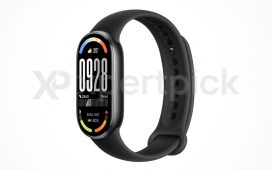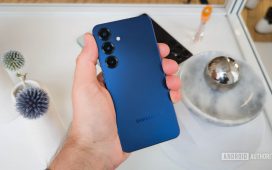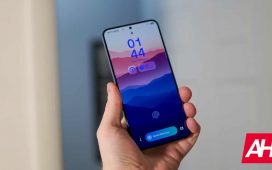
We’re mere days away from stable Android 16 rolling out to Pixel devices and the rest of the Android clan, and Google has already confirmed all the features coming with the stable platform release. We’ve also gotten our hands on Android 16 QPR betas, which gives us a peek at the features expected to come with the next platform release, Android 17. These spotted features and the other features that weren’t confirmed for Android 16 help us paint a picture of what’s possibly coming with Android 17. Here’s what we know so far about the next big platform update for Android!
Android 17: Name
Google used to name Android versions with dessert codenames, but it strayed away from that tradition with the release of Android 10, choosing to stick with only the version number for all future releases. Consequently, Android 17 will most likely be known simply as “Android 17,” with no dessert codename officially used.
However, Google still uses the dessert codename internally. Android 15’s codename was Vanilla Ice Cream, while Android 16 jumped all the way back to “B” with Baklava. We haven’t yet spotted Android 17’s dessert codename, but it will most likely be a dessert that starts with “C.” Do you have any guesses on what it could be?
What do you think Android 17’s internal dessert codename will be?
0 votes
Android 17 expected release date
Google has been switching things up with the Android 15 and Android 16 releases. Android 15 decoupled the platform update from the Pixel 9 series, giving the software release its independent timeline. Android 16 gave the platform a new timetable, with a major SDK release in Q2 and a minor SDK release promised for Q4.
For Android 17, we presume Google will continue on the path it set for itself with Android 16. Thus, unless things change for Android 17, we expect a major SDK release in Q2 2026 and a minor SDK release in Q4 2026.
You won’t have to wait that long to try out Android 17, though. With Android 16, Google released the first Developer Preview in November. If the company sticks to this release plan, we expect the first Android 17 Developer Preview builds to be released in November 2025.
Intrusion Logging
Google announced Intrusion Logging as a new feature in Android 16 that will help users detect if their device has been compromised. Intrusion Logging collects “activity logs” which include details such as USB connection events, network info like browsing history, app installs, Bluetooth connections, lock screen info, and Wi-Fi connections. Your activity logs are encrypted using your Google account password and device lock screen, ensuring only you can view them. These logs are stored in a “private and encrypted Google Drive,” providing further protection against unauthorized access.
While the API is already available in Android 16, Google hasn’t yet integrated Intrusion Logging into Google Play Services. Consequently, the feature will roll out later in the year, possibly as part of an Android 16 QPR, or even Android 17.
Improvements to Factory Reset Protection
At The Android Show: I/O Edition, Google announced that Android’s existing Factory Reset Protection mechanisms will become even more powerful later in the year. While Android already has several mechanisms to deter bypassing the setup screen after triggering a factory reset, these new protections will restrict all functionalities on devices that are reset without the owner’s authorization.
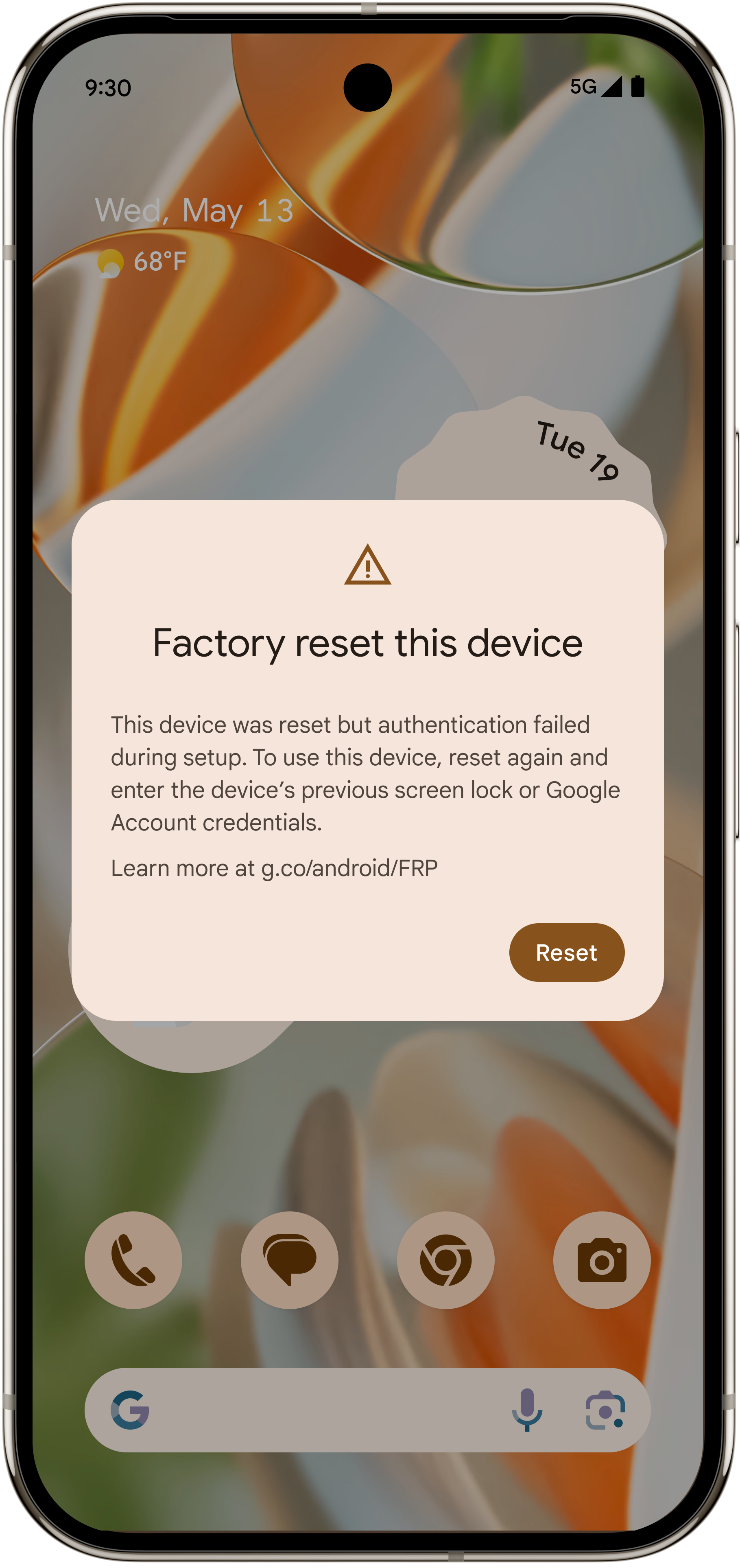
Android will likely detect if someone bypassed the setup wizard (to bypass previous factory reset protection mechanisms), and will thus force another factory reset cyclically, preventing unauthorized use until the user proves ownership.
Since these upgrades are coming later in the year, they will not be part of the first stable release of Android 16. Instead, we expect this update to come with the Android 16 QPR1 update for Pixel devices and then to the wider platform with Android 17.
Material 3 Expressive
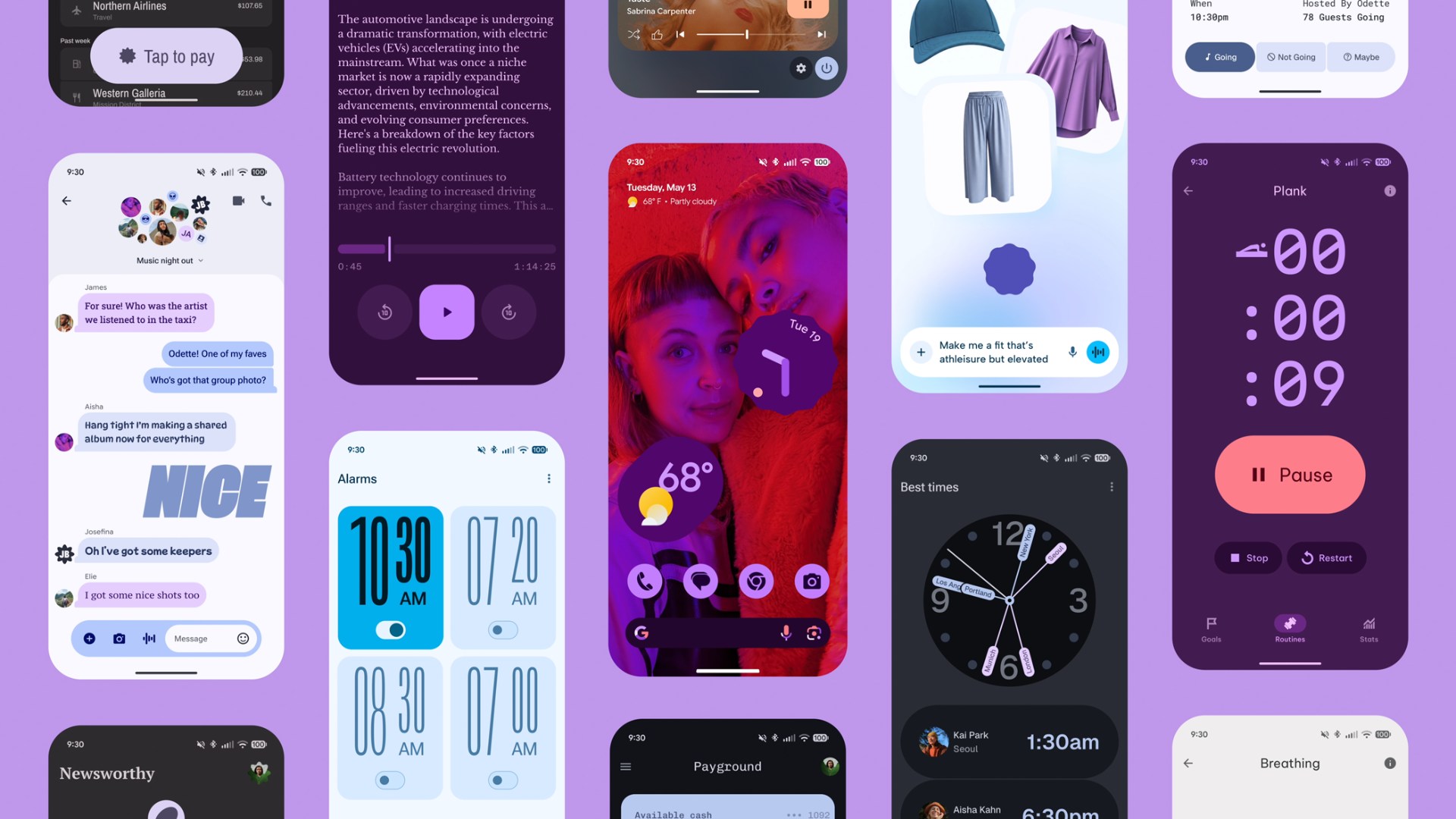
“So, the updates for Material Expressive are going to be available on Pixel devices first later this year, but it’s not going to be part of the public release in June,” confirmed Allen Huang, Google’s Director of Product Management for Pixel and Android system UI.
This sweeping UI update is a significant step in Google’s ongoing effort to make Android and Wear OS more visually engaging, emotionally resonant, and interactive. Some of its highlights include:
- Springier, natural-feeling animations that enhance touch interactions
- New icon shapes and refreshed typography
- Background blur effects for depth and focus
- Updated color themes
- Home screen and Quick Settings enhancements for a more dynamic layout
- Visual redesigns for many Google apps, bringing them in line with the new expressive aesthetic
You can learn more about Material 3 Expressive in our deep dive article.
Android 17: Leaked and upcoming features
Google has shared some details about Android 17 through its official announcements, but we’ve spotted a ton of changes in Google’s QPR updates that help paint a more complete picture of the changes we can expect to see in the final Android 17 release.
Google’s QPR updates and what they tell us about future Android releases
The Android platform follows an annual release schedule, which OEMs and the world at large have access to. Google also follows a second public release schedule for its Pixel devices in the form of QPR updates.
QPR refers to Quarterly Platform Release, an update track in which updates are released once every three months (quarter). So, we generally get an annual Android platform update on Pixels, followed by three QPR releases and then the next annual Android platform update.
While the features included in the Android platform update are final and available to the world, features released in the QPR updates are available exclusively to Pixel devices until the next Android platform update incorporates them. Further, Google also runs a separate beta program for the QPRs months in advance.
This gives us situations where we can try out new features coming to Android 17 (by checking them out in Android 16 QPR1 betas) before the stable Android 16 update is even launched! Later QPR betas give us even more features that can be chalked up to the next platform release, unless they are completely Pixel-exclusive.
As a result, we have a list of features that are coming to upcoming Android 16 QPR releases for Pixel devices, which are also likely to be added to the next Android platform update, Android 17. Let’s check them out!
Local Network Protection
Android 16 Beta 3 officially added the ability to test an upcoming “Local Network Protection” feature, which Google says is planned for a future Android major release, which we presume is Android 17.
Essentially, any app with the “INTERNET” permission can communicate with the Internet worldwide and with devices on the user’s local network. Local Network Protection will eventually require apps to request specific permission to access the local network. With Android 16 Beta 3, Google is giving app developers a chance to test if their apps are affected by this upcoming change.
Android’s big UI overhaul

Mishaal Rahman / Android Authority
Old vs new app drawer UI in the Pixel Launcher
With the above-mentioned Material 3 Expressive changes, Google is also planning a big UI overhaul for Android and expressive animations to accompany it. These changes were spotted and activated within Android 16 Beta 4, and are available widely with Android 16 QPR1 Beta 1, but they are unlikely to be available with the Android 16 stable release. Instead, they could come with a future QPR release or Android 17 and beyond in the stable branch.
As part of the UI overhaul, we expect changes across several important areas, like status bar icons, clock font, combined notifications, Quick Settings panel, cleaner lock screen with collapsed notifications, and so much more. The changes are pretty voluminous to list here, so check out our original coverage for the whole scoop.
Ambient Always On Display: Blurred wallpaper on lock screen
Google introduced wallpaper support on the Always On Display back in 2018 with Android 9 Pie, and briefly implemented it on the Pixel 3 series before removing it on future models. Once again, Google has been working on an AOD wallpaper implementation called “ambient AOD.” We managed to get the feature working before its launch for these screenshots, showcasing the lock screen wallpaper and the corresponding AOD counterparts:
As expected, the feature is still a work in progress and quite buggy at the moment. Code for the feature suggests that it will only be supported by particular displays, indicating that it could be restricted to some upcoming devices, like the Pixel 10 series.
Split Notification and Quick Settings panel
While Google didn’t showcase the split notification and quick settings panel when it showed off the Material 3 Expressive changes coming to the operating system, the company hasn’t abandoned the change, as we could spot progress in the code with the release of Android 16 QPR1 Beta 1. The feature could arrive in future Android 16 QPRs to Pixels and subsequently with Android 17 to the rest of the Android ecosystem. However, several OEMs already offer the split panels as an option, so many of us don’t actually need to wait to use this feature.
Notification summary
We’ve found strings within Android 16 Beta 3 that hint at a new “notification summaries” page. This “notification summaries” page will be positioned between the existing notification history and the upcoming notification bundle options under Settings > Notifications. The new page will have a single toggle to enable the feature, labeled “use notification summaries.”
The feature’s description states that it will “automatically summarize conversation notifications from apps.” Only messaging apps correctly categorize their notifications as conversation notifications, so only those would be AI summarized. The system will also let you exclude apps from having their notifications summarized.
It’s not clear when the feature will arrive on Android. It might not make it to the stable Android 16 release, but come through on an Android 16 QPR release or even on Android 17.
Gemini-powered Notification “Magic Actions”
In 2018, Android 9 released Smart Reply, which provides suggested replies as tappable chips beneath a notification for quick responses. Android 10 expanded this with Smart Actions, offering contextual actions based on notification content. This Smart Actions feature powers the “Open Maps” chip when a notification includes an address. Smart Replies and Smart Actions are powered by on-device machine learning models, but are limited to short, canned replies that might not fully appreciate the context.
We’ve spotted evidence with Android 16 that suggests Google is developing a more advanced version of Smart Actions, dubbed “Magic Actions.” When the Magic Action feature is enabled, Android will hide Smart Actions and instead prominently display a new Magic Action button. This button is slated to receive “special visual treatment,” possibly indicating a custom animation when it appears or is tapped. Speculatively, the feature could tap into Google’s Gemini model to generate more personalized and powerful actions.
Recents screen changes
With Android 16 QPR1 Beta 1, Google made some subtle changes to the Recents screen. Previously, only the app’s icon appeared above its task. Now, the Recents screen displays the app’s icon, name, and a downward-pointing arrow within a small pill-shaped button overlaid on the task.
Displaying the app’s name is a welcome clarification, clearly identifying which app corresponds to each task preview. The most impactful change, however, is the addition of the downward arrow. This icon is widely understood to indicate an additional menu, so its presence should help more users realize they can access further actions directly from the recents screen.
The dedicated “Screenshot” and “Select” buttons are now also enclosed in pill-shaped containers, creating a more consistent look in the Android 16 QPR1 Beta 1 release. Furthermore, the previously solid gray background has been replaced with a blurred version of the user’s wallpaper or underlying content, a visual effect aligning with Google’s new Material 3 Expressive theme.
Standby for Hub Mode
The evidence for this isn’t strong, but Google could be working on Standby for Hub mode, similar to iOS’s Standby Mode, which transforms the iPhone into a mini smart display. When Hub Mode arrives on Pixels with Android 16 QPR1 (and other Android devices with Android 17), users will be able to seamlessly switch between their screen saver (displaying clocks, photo frames, etc.) and their widgets, similar to how iOS’s Standby Mode functions.
Android’s Desktop Mode
With Android 16 Beta 4, we managed to activate Android’s desktop mode. Given the feature’s unfinished state, we expect it to arrive either with a later Android 16 QPR release or with Android 17.
Compared to the current, barebones desktop interface that appears when you connect a Pixel device to an external display, Android’s new desktop mode actually displays the taskbar and status bar. The taskbar is a big addition, as it provides access to your pinned apps and a better version of the app drawer. The taskbar can also show recent apps while in desktop mode, making it easier to multitask.
It’s also possible to launch multiple apps in floating windows simultaneously using the new desktop mode. Further, you can freely move, resize, or snap windows to the side, just like on desktop operating systems. This makes it easy to drag and drop content from one app to another, provided the apps you’re using support drag-and-drop.
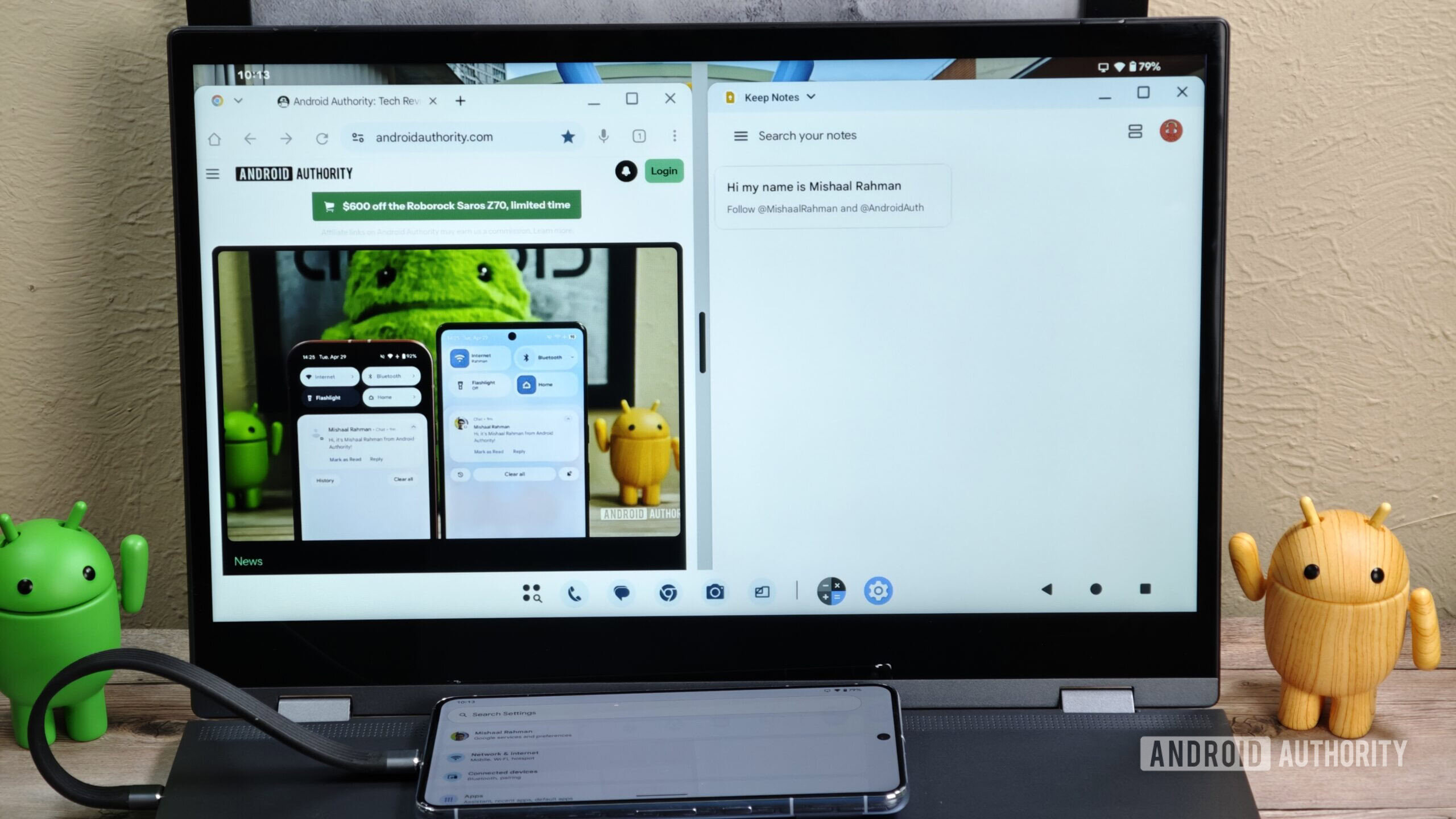
Mishaal Rahman / Android Authority
This feature still needs more work, so we expect to learn more in the coming months.
These are all the changes we expect to see in the Android 17 platform update in 2026. Let us know your favorite upcoming feature in the comments below!

